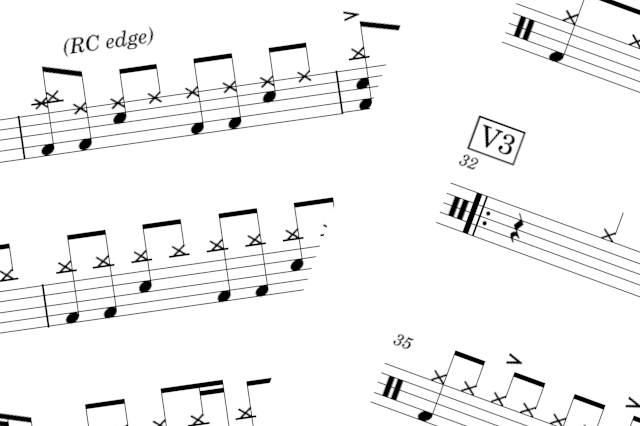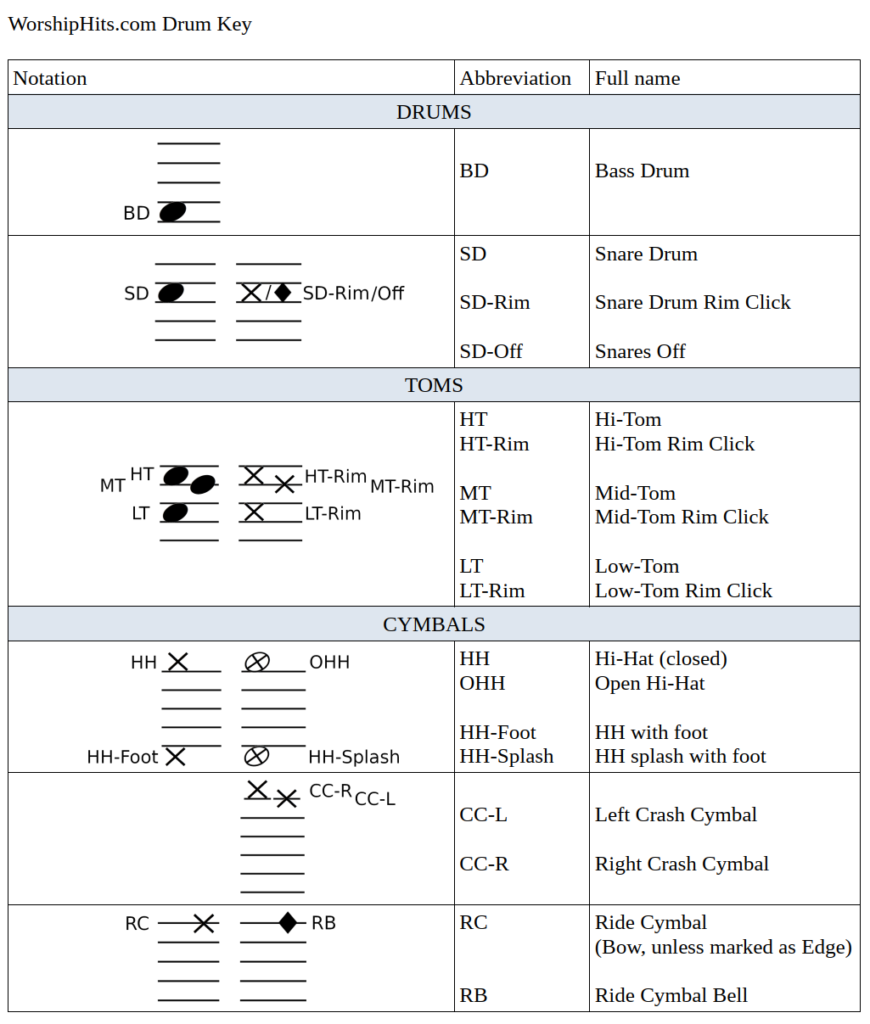
Worship Drum Chart Features
Worship Drum Chart Features
Our drum charts are designed to be easy to read and practical for using in church.
Below are some of the special features of our drum charts:
Song Information
At the top of each chart there is song information, including:
- Song title, eg Man Of Sorrows
- Level, eg. Drums Pro
- Artist, eg. Recorded by Hillsong
(The drum chart is transcribed / arranged from the recording on the website product page)
Drum Key
Tempo
There is a speed indication in beats per minute (BPM). This is based on the tempo of the recording. It is recommended that you practise with a metronome. When playing at church, be prepared to count in, or play a bar on the HH or a stick click. You might like to use a metronome with a setlist feature to have all your tempos ready to go.
Repeats
Where appropriate, repeated bars are used to make the music simpler to follow with less to think about. It means the drum chart will go for less pages and it will fit more easily on a music stand, with less page turns. However, repeated bars are not used across sections so that the song structure is still clear.
Regular repeat signs mean to play the bar/s two times in total. “x6” means to play the repeated section 6 times in total.
Page Turns
Charts are designed to work in real situations on a music stand. Most songs fit within 2 pages so there is no need for a page turn. The music can easily be used inside an open A4 folder.
If songs go for 3 pages, wherever possible, there is an easy page turn between pages 1 & 2 or pages 2 & 3. Occasionally there is no convenient place for a page turn but at least you can fit 3 pages on a music stand.
If a song goes for 4 pages, there is usually a page turn between pages 2 & 3.
Optional HH/RC
Some charts have Optional HH or Optional RC marked in the chart, where you can play the Hi-Hat or Ride Cymbal on beats 2 & 4 or occasionally on every beat. This marking indicates that this is not in the recording but it can be very helpful to keep the band in time. If you are using a click track you won’t need to play these optional parts. Sometimes you might just have rests on the chart. Either way, please use your wisdom as to whether or not you should play these optional parts.
Extra Bars
Occasionally a bar is marked as ‘extra bar.’ This is usually a 9th bar in a section, where one might expect the usual even 8 bars. This is just a courtesy to remind you of this extra bar.
Sticking
Sometimes there are some recommended stickings:
- R: Right hand
- L: Left hand
- B: Both hands
Varying charts as needed
Please be prepared (with a pencil!) to make changes to the drum charts to suit your:
- Level: You could drop out the Hi-hats with the foot, or simplify the fills.
- Time: You might usually be able to play the pro drum charts but you have a particularly busy week. So instead, you could play the main beats from all the sections but simplify some of the drum beats and drum fills.
- Drum Kit: Perhaps your drum kit at home, or the one you will be using at church doesn’t have all of the parts in the chart. For example, some electronic drum kits don’t have a rim click on some or any of the drums/toms. You could move the rim click to the snare drum or to the hi-hat. Some drum kits may only have 1 crash but the chart may have 2 crashes (Left and Right). If this is the case, you could play all crashes with your left crash, or play the right crash on the Ride Cymbal.
- Church arrangement: The charts are designed to match the recording in case you would like to play along with the recording. Many churches will play it exactly the same as the recording. However, some churches may play the song at a different speed, structure, or with a different feel in some sections.




